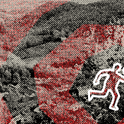The era in which Britain was Roman—roughly the first 400 years of the last millennium—can seem rather marginal to us in the 21st century. We’ve been schooled, largely by the Victorians, to think of British history as starting with the Saxons, to whom (or so the myth goes) we can trace our most prominent institutions—parliament, the monarchy, the Church.
Sometimes Britain’s early history can seem like embarrassing throat-clearing that happens before things really get going. But dig deep, and the encounter with Roman Britain is simmering with politics, and always has something to say to the present.
Historians of the 18th century had a habit of drawing moral conclusions about the nature of power from the wrecked traces of Rome seen in the British landscape. In the 1930s, WH Auden wrote a radio play heavy with intimations of conflict, set on Hadrian’s Wall. Boudicca, the British queen who nearly sent the Romans packing, provided a troubling, double-edged template of female power for figures from Elizabeth I to Margaret Thatcher.
This August, some brave actors and musicians will perform an adaptation, by playwright David Greig, of my book Under Another Sky at the Edinburgh International Book Festival. It is about how, despite the pressure to write it out of the script, the idea of Roman Britain has nonetheless bubbled up over the centuries. There’s a bit of first-person narrative in the book in which I describe the two summers I spent travelling around the Roman remains of Britain in a slightly clapped-out VW camper van.
But it’s the politics that I suspect has attracted Greig and the play’s director, Elizabeth Newman. For the Scots, the idea of Rome’s record in their country was especially contested in the decades after the Act of Union of 1707. Antiquary Alexander Gordon took a strong nationalist pride in the Romans’ failure to subdue the Highlands, and went by the nickname “Calgacus”—the Romans’ mightiest Caledonian foe. His fellow Scot John Clerk, by contrast, a commissioner for the Act of Union, saw a direct line between the Romans’ occupation of lowland Scotland to the enlightened culture of his contemporary Edinburgh.
William Roy, who surveyed Scotland for the Hanoverians after the Jacobite uprising, marked Roman forts and walls on the great map he produced for the Duke of Cumberland, surely feeling empathy with the Romans who had tried to subdue the wild north with roads and military engineering.
The book came out before the Scottish referendum, before the EU referendum, before the bitterness and anxiety of our current politics. I was interested in the curious role the idea of Roman Britain had to play in the invention of the modern British nation. At the time, though, Roman Britain was more obviously being invoked (by historians and in museums) as a precursor to contemporary multiculturalism.
After all, during Britain’s 400 years in the empire, Syrians were buried in Scotland, and sailors from Basra patrolled the Tyne. I wrote about how white supremacists were denying the long history of non-Europeans in Britain, in the teeth of evidence literally carved in stone; such denial has become more empowered and vitriolic since then. Thinking about the deep past offers important perspective on the historical contingency of our modern borders and our ideas of the nation state. And that’s more important than ever.

How Roman Britain invented modern Britain
White supremacists deny the long history of non-Europeans in Britain, in the teeth of evidence literally carved in stone
July 17, 2019











